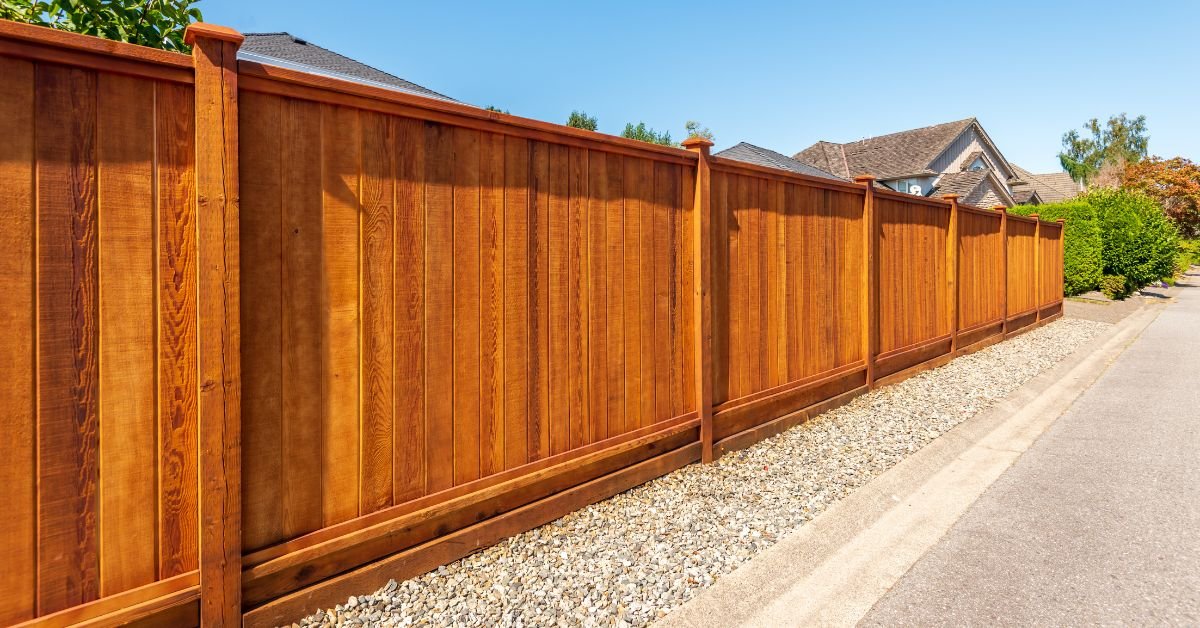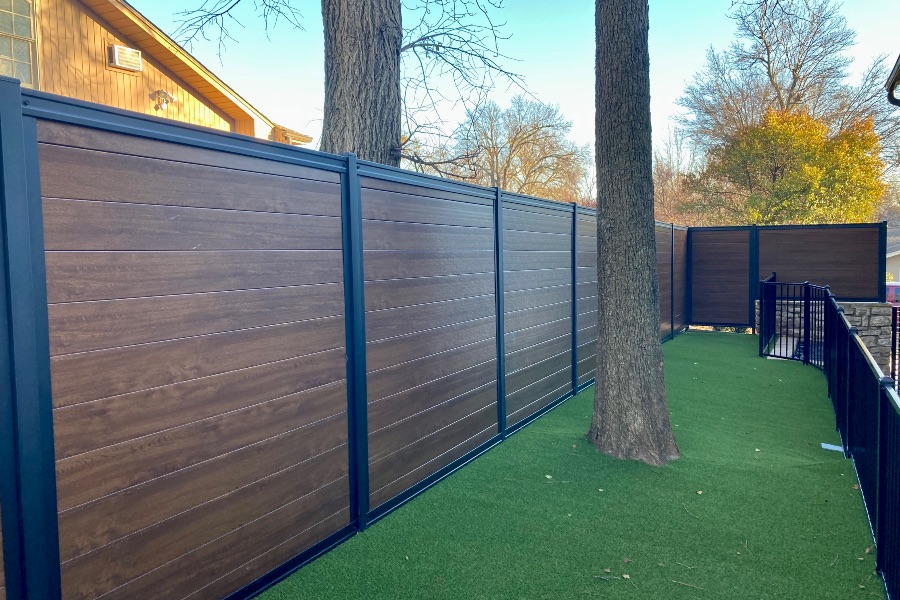All Categories
Featured
When it comes to preserving a wood fencing, property owners frequently deal with the choice of whether to repaint or discolor. Both alternatives have their disadvantages and pros, and the option ultimately relies on your aesthetic preferences, the kind of wood, and just how much upkeep you're prepared to dedicate to. Here's a detailed comparison to assist you make an educated choice.
The Basics of Painting and Staining
Paint includes covering the timber with a nontransparent layer of color. It provides full coverage, concealing the timber grain while supplying outstanding defense against environmental components.
Discoloring penetrates the timber, improving its all-natural beauty while adding a protective layer. Depending upon the type, spots can range from transparent to strong, allowing differing levels of wood grain visibility.
Advantages And Disadvantages of Painting
Pros:
Vast Array of Colors: Repaint deals countless shade choices, enabling you to match your fencing to your home's exterior or individual design.
Longer Lasting: High-quality outside paint can last up to 5-7 years, requiring less frequent reapplication.
Superior Protection: Paint kinds a thick, strong obstacle against moisture, UV rays, and pests.
Disadvantages:
Peeling Off and Splitting: Over time, paint can crack or peel, specifically in locations with severe weather problems.
Hides Natural Timber Elegance: If you love the natural grain of wood, paint may not be the finest selection.
Higher Maintenance: Repainting needs scratching off the old paint, which can be labor-intensive.
![]()
Benefits And Drawbacks of Discoloration
Pros:
All-natural Look: Stains maintain and improve the natural beauty of the timber, making it ideal for premium timber like cedar or redwood.
Simpler to Reapply: Unlike paint, discolorations don't break or peel. Reapplying discolor normally calls for much less surface preparation.
Flexible Complete Options: Spots come in transparent, semi-transparent, and solid varieties, providing various degrees of insurance coverage.
Disadvantages:
![]()
Much Shorter Lifespan: Stains, especially clear and semi-transparent ones, might need reapplication every 2-3 years.
Limited Color Alternatives: While stains supply natural tones, they lack the wide shade combination readily available with paint.
Less Safety: Discolorations permeate the timber yet do not provide as thick an obstacle as paint, making them a little less safety against severe climate.
Variables to Think About
Aesthetic Preferences: If you want vivid colors and complete insurance coverage, paint is the method to go. For a natural and rustic appearance, select discolor.
Timber Kind: High-quality timbers with stunning grains take advantage of discoloration, while lower-grade timbers can be repainted for a sleek appearance.
![]()
Climate: In wet or humid climates, paint's thicker barrier may use far better protection. In modest or completely dry environments, discolorations can be enough.
Maintenance Commitment: Paint entails less constant reapplication but more initiative during touch-ups. Staining calls for routine upkeep but is much easier to take care of.
Final Ideas
Both paint and discoloration can efficiently secure and beautify your wood fencing. The very best alternative depends on your priorities, whether they lean toward looks, sturdiness, or ease of upkeep. By comprehending the advantages and disadvantages of each, you can pick the coating that lines up with your needs and ensures your fence continues to be a standout attribute of your property for several years to find.
The Basics of Painting and Staining
Paint includes covering the timber with a nontransparent layer of color. It provides full coverage, concealing the timber grain while supplying outstanding defense against environmental components.
Discoloring penetrates the timber, improving its all-natural beauty while adding a protective layer. Depending upon the type, spots can range from transparent to strong, allowing differing levels of wood grain visibility.
Advantages And Disadvantages of Painting
Pros:
Vast Array of Colors: Repaint deals countless shade choices, enabling you to match your fencing to your home's exterior or individual design.
Longer Lasting: High-quality outside paint can last up to 5-7 years, requiring less frequent reapplication.
Superior Protection: Paint kinds a thick, strong obstacle against moisture, UV rays, and pests.
Disadvantages:
Peeling Off and Splitting: Over time, paint can crack or peel, specifically in locations with severe weather problems.
Hides Natural Timber Elegance: If you love the natural grain of wood, paint may not be the finest selection.
Higher Maintenance: Repainting needs scratching off the old paint, which can be labor-intensive.

Benefits And Drawbacks of Discoloration
Pros:
All-natural Look: Stains maintain and improve the natural beauty of the timber, making it ideal for premium timber like cedar or redwood.
Simpler to Reapply: Unlike paint, discolorations don't break or peel. Reapplying discolor normally calls for much less surface preparation.
Flexible Complete Options: Spots come in transparent, semi-transparent, and solid varieties, providing various degrees of insurance coverage.
Disadvantages:

Much Shorter Lifespan: Stains, especially clear and semi-transparent ones, might need reapplication every 2-3 years.
Limited Color Alternatives: While stains supply natural tones, they lack the wide shade combination readily available with paint.
Less Safety: Discolorations permeate the timber yet do not provide as thick an obstacle as paint, making them a little less safety against severe climate.
Variables to Think About
Aesthetic Preferences: If you want vivid colors and complete insurance coverage, paint is the method to go. For a natural and rustic appearance, select discolor.
Timber Kind: High-quality timbers with stunning grains take advantage of discoloration, while lower-grade timbers can be repainted for a sleek appearance.

Climate: In wet or humid climates, paint's thicker barrier may use far better protection. In modest or completely dry environments, discolorations can be enough.
Maintenance Commitment: Paint entails less constant reapplication but more initiative during touch-ups. Staining calls for routine upkeep but is much easier to take care of.
Final Ideas
Both paint and discoloration can efficiently secure and beautify your wood fencing. The very best alternative depends on your priorities, whether they lean toward looks, sturdiness, or ease of upkeep. By comprehending the advantages and disadvantages of each, you can pick the coating that lines up with your needs and ensures your fence continues to be a standout attribute of your property for several years to find.
Latest Posts
Check Out Outstanding Car Repair Care from Montclare Auto Repair – Keep Your Car Running Smoothly
Published May 24, 25
1 min read
Discover the Best Auto Repair Coupons in Montclare, Chicago
Published May 23, 25
1 min read
Discover WyHy FCU – The Key to Superior Financial Services in Wyoming
Published May 22, 25
1 min read
More
Latest Posts
Check Out Outstanding Car Repair Care from Montclare Auto Repair – Keep Your Car Running Smoothly
Published May 24, 25
1 min read
Discover the Best Auto Repair Coupons in Montclare, Chicago
Published May 23, 25
1 min read
Discover WyHy FCU – The Key to Superior Financial Services in Wyoming
Published May 22, 25
1 min read